The National Disability Insurance Scheme (NDIS) has brought about significant opportunities for businesses in the disability support sector. However, with the increasing number of NDIS providers, it’s crucial for providers to implement effective marketing strategies to stand out from the competition and attract NDIS participants. In this blog post, we consolidate the Top 10 strategies that will help you find NDIS participants.
If you are looking for a in-depth guide, then download The NDIS Marketing Guide
1. Understand Your Target Audience:
To effectively market your NDIS services, it’s essential to understand your target audience—NDIS participants. Gain insights into their needs, preferences, and challenges. Conduct thorough market research and develop buyer personas to tailor your marketing efforts accordingly.
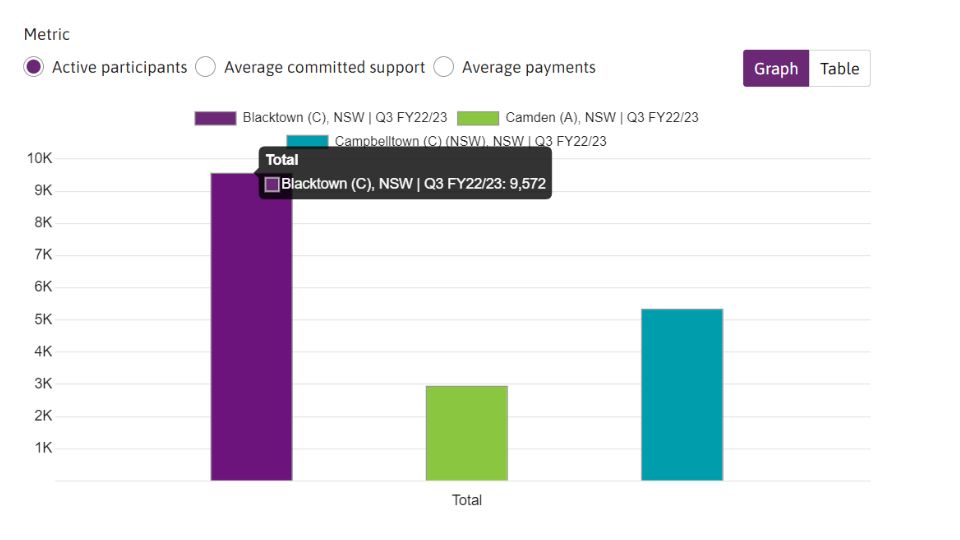
The most effective way to do this is to combine insight from:
- The NDIS Explore Data Tool (ensure to compare nearby geographies to see where the most participants are).
- ABS Census Data (to validate who they are culturally and demographically).
- Defining Your Support Hubs / Operational Areas of Excellence (you should only market to areas you have the capability of serving).
- Google Keyword Planner.
- Connecting with the Mission / Purpose of your business.
All this target audience insight can be used to create an Ideal Customer Profile that connects with you Value Proposition.
2. Develop a Clear Value Proposition:
Differentiate your NDIS provider business by clearly defining your unique value proposition. Identify what sets you apart from competitors and articulate the benefits participants will receive by choosing your services. Communicate your value proposition consistently across all marketing channels and materials.

Value Propositions should focus on:
- Quantified Value (i.e. real metrics that statistically set you apart from your competition).
- Differentiation.
- Relevancy (in the eyes of NDIS participants and their families).
3. Build a Strong Online Presence:
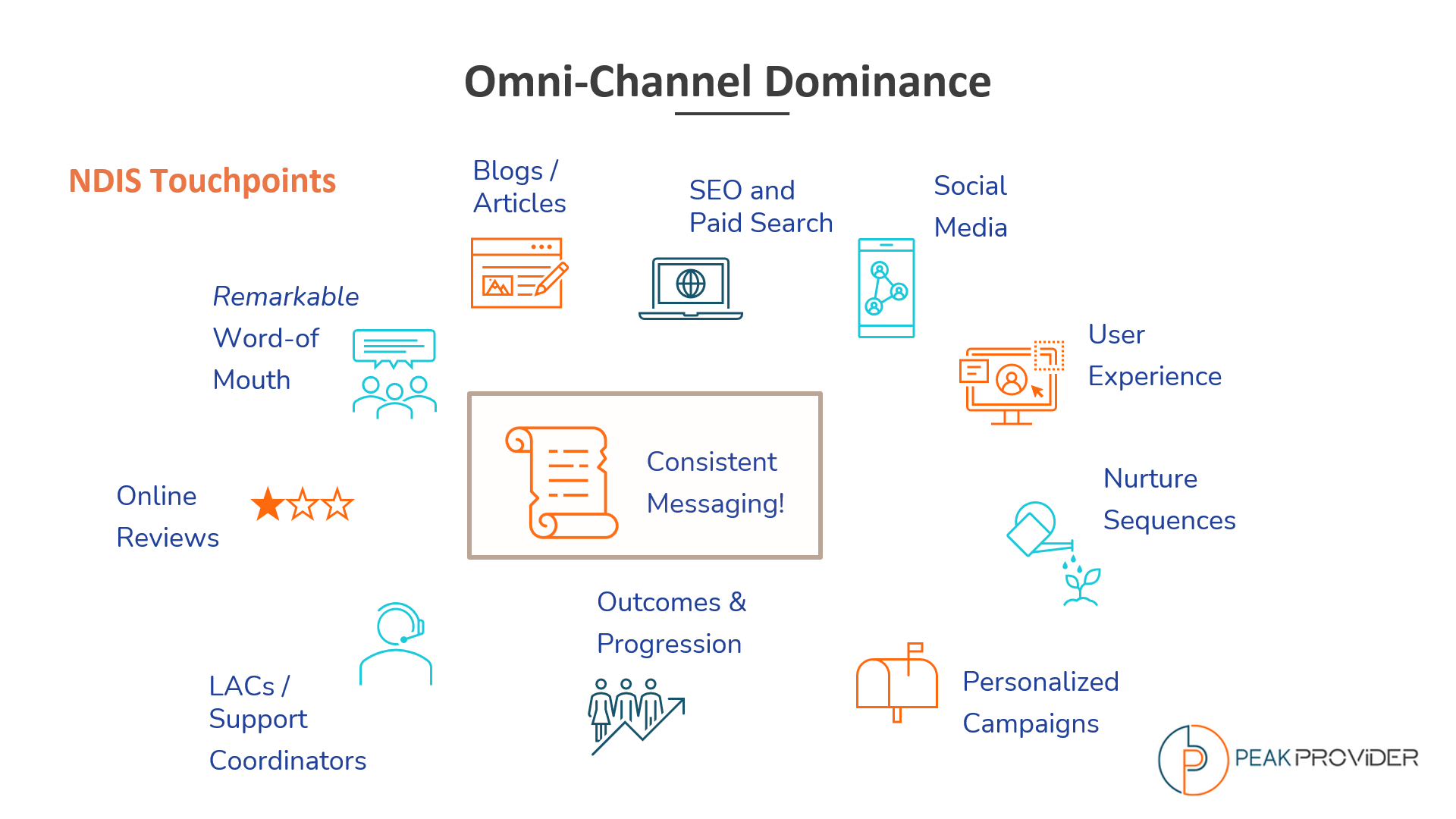
An online presence is vital for any business in today’s digital era. Create a professional website that showcases your services, expertise, and values. Optimize your website with relevant keywords, provide informative content, and ensure it’s user-friendly and accessible. Leverage social media platforms to engage with your target audience, share valuable content, and establish your brand’s credibility.
The goal is to be pervasive across what I call “NDIS Touchpoints” and to have consistent messaging.
Here are seven examples of factors to be consistent in online:
- Geography
- Value Proposition
- Company Values
- Calls to Action
- Company Mission
- Irresistible Offers
- Promises
4. Leverage Content Marketing:
Content marketing is a powerful tool for NDIS providers to educate, inform, and engage with their target audience. Create relevant and informative content such as blog posts, videos, podcasts, and infographics that address common questions, challenges, and interests of NDIS participants. Share this content on your website, social media platforms, and through email marketing to position yourself as a trusted authority.
Step 1: Divide Content Across Service Categories.
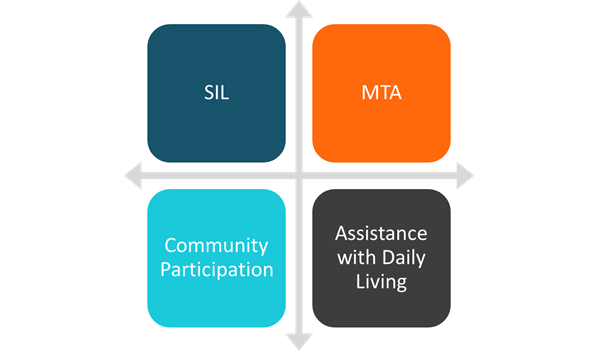
Step 2: Create 10 Common Questions for Each Category
For example, if you offer Support Independent Living, you could answer these questions / titles through content marketing:
- Smoothening transitions from hospital care (demonstrating competence in this niche).
- The top five pitfalls of the SIL process (a valuable guide for support coordinators).
- Why 1:2 just doesn’t work.
- What is a Roster of Care?
- How long does it take to get SIL funding?
Step 3: Compile 52 Weeks of Content
Use these service-based ideas and combine them with the following content ideas to come up with 52 weeks of content. This will give you a year’s worth of content at one social media post a week. This should be documented on your Marketing Calendar so that the guesswork is taken out of the weekly activity.
What else can content be about?
- Seasonal Holidays
- Event Announcements
- Culturally Topical
- News Hacking
- Day In The Life / Meet The Team
5. Utilize Search Engine Optimization (SEO):
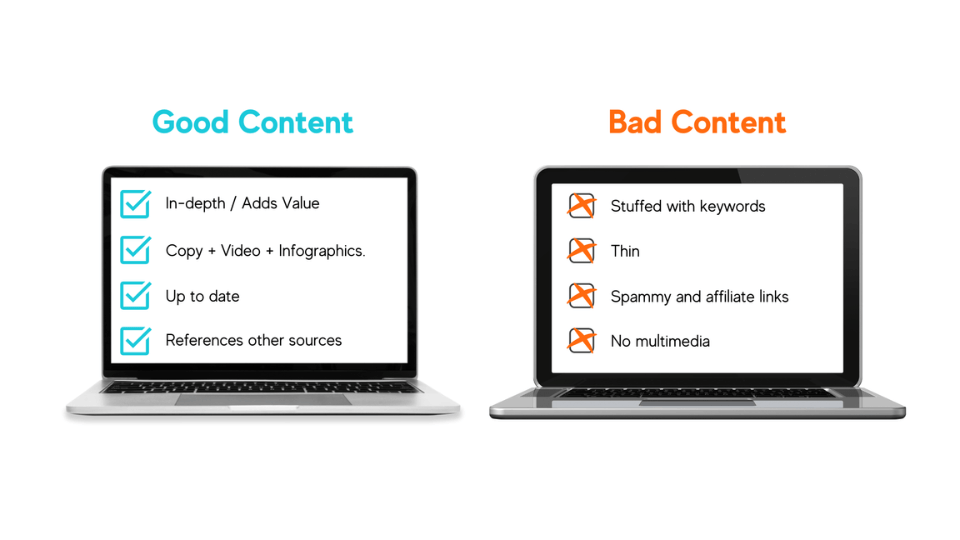
Optimizing your online content for search engines is crucial for driving organic traffic to your website. Conduct keyword research to identify the most relevant and valuable search terms used by NDIS participants. Incorporate these keywords naturally into your website content, headings, meta descriptions, and URLs. Additionally, optimize your website’s loading speed, mobile responsiveness, and navigation structure.
Some marketing professionals claim that SEO is dead. Whilst it is a hot debate, I suggested instead that SEO has evolved. There are about six outdated approaches that don’t work anymore, but there are a plethora of tools that can be used to gain free and organic traffic.
6. Embrace Video Marketing:
Video marketing has proven to be highly effective in engaging audiences. Create compelling videos that showcase your services, success stories, testimonials, and educational content. Share these videos on platforms such as YouTube, social media, and your website to increase brand awareness and attract potential participants.
Why should I embrace video marketing?
A lot of providers don’t realise that YouTube is owned by Google and is the second largest search engine in the world. You may notice that Google includes videos in its search engine results too.
- Half of social media users prefer video over other types of content.
- People share video content with friends twice as much as any other type of content.
As an example, our business publishes its podcast episodes on our YouTube channel.
7. Establish Strategic Partnerships:
Collaborate with other businesses and organizations that complement your services. Partnering with local disability support organizations, healthcare professionals, or community groups can help expand your reach and enhance your credibility. Seek opportunities for cross-promotion, joint events, and referrals to tap into their existing networks.
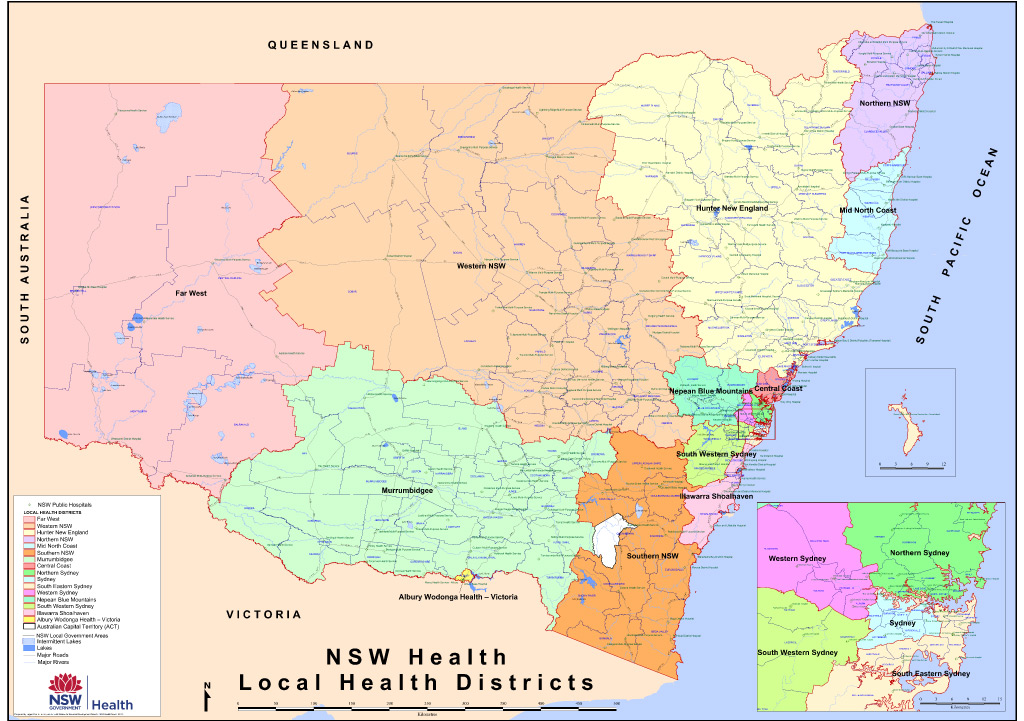
A great example of this is with SIL when collaborating with your Local Health District – see our blog Supported Independent Living (SIL) Marketing for further information.
8. Leverage Online Directories and Referral Platforms:
List your NDIS provider business on relevant online directories and referral platforms. Examples include MyCareSpace, which connects participants with service providers. Regularly update your profile with accurate information, reviews, and compelling descriptions to increase your visibility and credibility.
MyCareSpace recommends three providers according to post code radius and allow providers to list exact postcodes on their portal, allowing for exact service areas to be established. Providers can log on to their portal and maintain updates and status for each inbound lead. Think about them as an extension of your sales team!
9. Engage in Community Involvement:

Actively engage with the NDIS community by participating in local events, workshops, and conferences. Offer to deliver educational sessions, contribute to relevant publications, or volunteer your expertise. Building strong relationships within the community can help generate referrals and establish trust with participants and their families.
The NDIS should be an industry of collaboration and focused on the participant. Certain providers do not take this attitude and see it as a competitive “dog-eat-dog” environment. The best thing I can say is that you will stand out as a provider if you rise above this competitive attitude. There is truly enough work around for ever competent provider.
10. Create a List of Support Coordinators and Implement a Sales Cadence Approach:

Support coordinators play a crucial role in connecting NDIS participants with service providers. By building relationships with support coordinators, you can increase the chances of receiving referrals for your NDIS provider business. Here’s how you can approach this:
- Identify Support Coordinators: Research and compile a comprehensive list of support coordinators in your state or territory. Utilize online directories, professional networks, and industry associations to gather this information.
- Segment and Prioritize: Segment the list based on criteria such as location, specialization, or target participant demographics. Prioritize high-value support coordinators who are likely to have a significant impact on your business.
- Develop a Sales Cadence: Create a structured approach for reaching out to support coordinators. Consider a multi-touch approach, including emails, phone calls, social media engagement, and in-person meetings or events (where possible). Plan the cadence strategically to ensure consistent and regular communication without being overly pushy.
- Personalize Outreach: Tailor your outreach efforts to each support coordinator. Research their background, interests, and areas of focus. Personalization demonstrates your genuine interest in collaboration and builds rapport. Highlight how your services can benefit their participants and make their job easier.
- Leverage CRM Automation: Utilize customer relationship management (CRM) software to streamline and automate your outreach process. Set up automated email sequences, reminders, and follow-up tasks. This helps to maintain consistency and ensures no potential opportunities fall through the cracks.
- Provide Value: Offer support coordinators valuable resources, such as educational materials, case studies, or success stories related to NDIS services. Position yourself as a trusted resource and industry expert, enhancing their confidence in referring participants to your business.
- Nurture Relationships: Building relationships takes time and effort. Regularly check in with support coordinators, provide updates on your services, and seek feedback to strengthen the partnership. Actively engage with them on social media platforms, attend relevant events, and offer to collaborate on initiatives that benefit both parties.
- Monitor and Adjust: Continuously monitor the effectiveness of your outreach efforts. Track metrics such as response rates, referral conversions, and overall engagement. Adjust your sales cadence, messaging, or targeting strategies based on the insights you gather.
By actively reaching out to support coordinators and building relationships, you can increase your visibility, receive valuable referrals, and position your NDIS provider business as a trusted and reliable choice in the eyes of support coordinators and participants alike.
Remember, creating lasting relationships takes time and dedication. Approach support coordinators with a genuine desire to collaborate and provide excellent services to NDIS participants.
Conclusion:
Developing a strong marketing strategy is essential for NDIS provider businesses to thrive in the competitive landscape. By understanding your target audience, building a strong online presence, developing a clear value proposition, and utilizing effective marketing channels, you can effectively attract NDIS participants to your business.
What is our business?
Peak Provider helps NDIS providers scale through sales and marketing events and projects. We can help you dive deeper into these subjects in three ways, via our:
We also have our Peak Provider NDIS Podcast.







